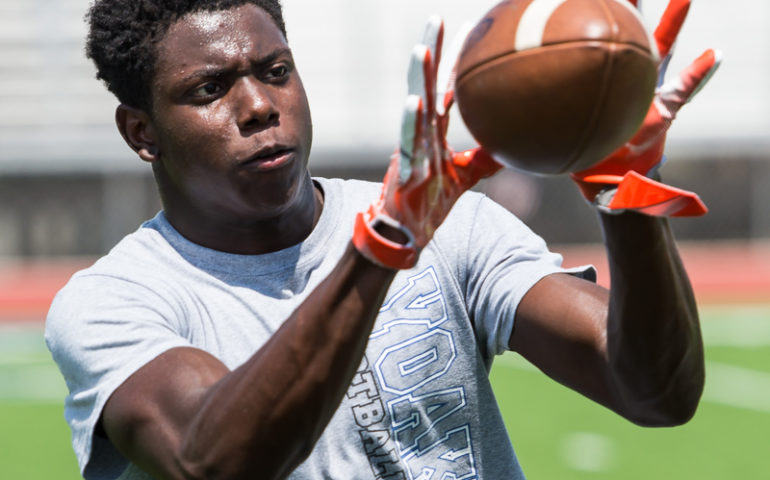If you’re a football player who feels ready to make the jump to varsity, you better be prepared for a whole new ballgame in every aspect of your life.
The unpaved journey could begin with lifting weights together as a team, followed by functional types of exercises along with dynamic stretching, conditioning and 7on7s.
That’s just the start of the offseason program for Terry Summerfield, the head coach of Barlow (Ore.) High School, who firmly believes you win varsity football games in the offseason, not because of your commitment level during the actual year.
If you’re making the jump to varsity football and you haven’t been taking your preparation seriously–it may already be too late. Summerfield’s program begins at the start of the calendar year.
“So much of that is preparation, and you start in January usually,” Summerfield said. “You’re doing everything you possibly can to get yourself ready; whether you’re lifting, going to team camps or participating in spring football and on in through the summer.”
Being a varsity athlete can be a much bigger commitment of time than middle school, freshmen or junior varsity football. And it’s not only lifting, practicing and games, but there are also responsibilities for players to participate in activities that help a program establish culture.
“It’s quite a commitment, and we ask a lot out of the kids, but that’s a big part of it. Not only are we expecting them to do the physical part of it, but we do a lot of things for team building to bring our kids together.”
Bonding as a group – such as volunteering in the community – is one of the best ways to make connections with the families and fans of your team. When you’re a member of the varsity football team, you’re a more visible member of the community. The expectations are higher. Summerfield believes athletes should be ready to strive to make people’s lives better by giving back to the community.
Summerfield likens varsity football to a sociology class in terms of a way to learn life skills. He believes it’s important for teams to go out into the community and show support for charities, families in need or medical situations.
When it comes to actual on-field work, a few of the biggest differences on the varsity level include:
- Needing consistent focus
- Adjusting to the game speed
- More film study and game preparation
- Enhanced focus on nutrition and caring for your body
Additionally, displaying leadership is even more important. Players are expected to not only mentor the young athletes, but also show them the way in the weight room, film sessions, classroom and especially the new bright lights.
Even if a player can handle the physical adjustments, the mental and social aspects can be challenging.
“I think it’s a big jump, especially for a young player who is physically capable,” Summerfield said. “Sometimes you get a freshman who turns sophomore, but it’s quite a culture shock.”
Luckily for players beginning varsity, there are systems in place to help with the transition and coaches to have their back during the process.
“We as coaches are creatures of habit, we plan for everything. We are planning for first down, second down and third down, [etc.], and we should be planning on getting our kids ready for those emotional aspects of the game – both physically and mentally too.”
For those of you who have the eye on the varsity prize, be ready to make the jump to a whole different level, on the field and off.
Article Originally Posted Here.

